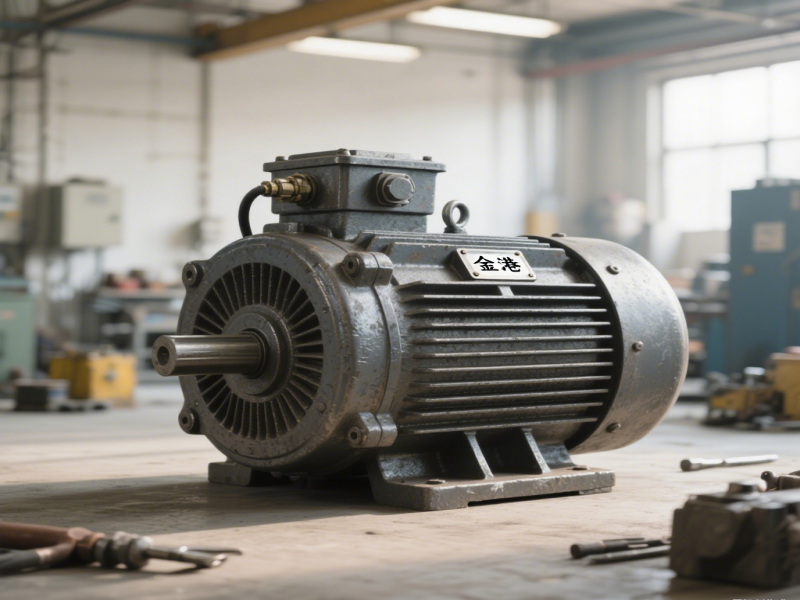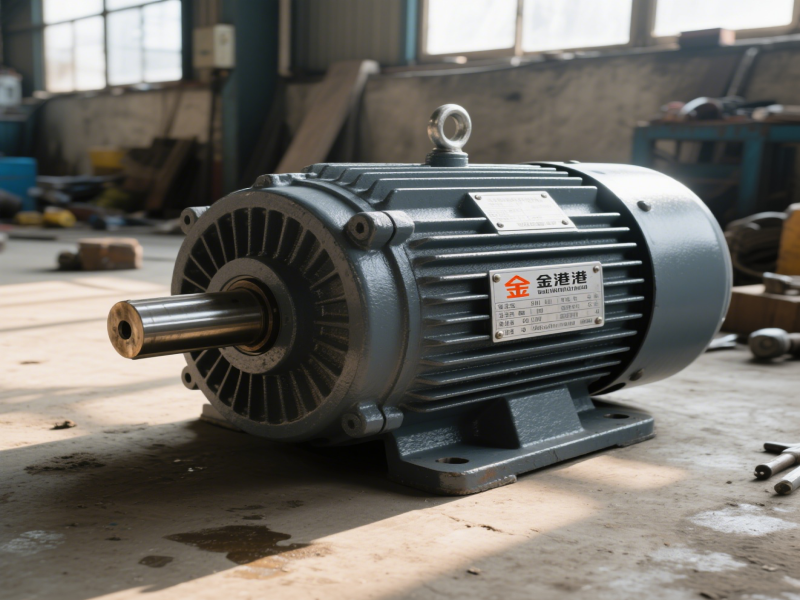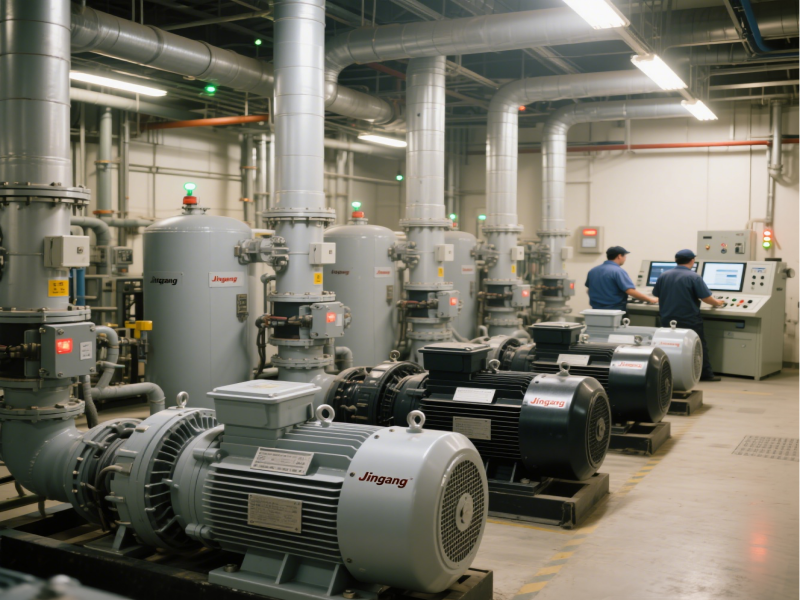Application fields and core advantages of three-phase asynchronous motors in cast iron motors
Application Areas
Based on the stability of cast iron structure and the characteristics of three-phase asynchronous motors, such as “simple structure, reliable operation and low cost”, its application covers many core links of industrial production:
1.Industrial drive equipment
Conveyor belts and production lines: The sturdy base of the cast iron motor can withstand the continuous impact and vibration of the conveyor belt. The three-phase asynchronous motor drives the conveyor belt through the reduction mechanism, which is suitable for the continuous production needs of the food, automobile, logistics and other industries (such as the transportation of parts in automobile assembly lines).
Mixing equipment: In the mixing tanks of the chemical and building materials industries, the cast iron motor can resist the corrosion of the mixing materials (part of the cast iron surface can be treated with anti-corrosion), and the constant speed characteristics of the three-phase asynchronous motor can ensure the mixing uniformity (such as the mixing of raw materials in concrete mixing plants).
2.Pumps and fans
Water pumps and oil pumps: The sealing performance of cast iron motors (precise fit between cast iron end covers and bases) can prevent liquid leakage, and the high torque characteristics of three-phase asynchronous motors can drive the impeller to rotate at high speed, which is suitable for industrial water supply, oil field oil transportation and other scenarios (such as sewage lifting pumps in urban sewage treatment plants).
Ventilators and blowers: Fans need to work continuously for a long time during operation. The heat dissipation of cast iron bases can prevent the motor from shutting down due to overheating, and the wide speed range of three-phase asynchronous motors (through variable frequency speed regulation) can adjust the air volume, which is suitable for factory ventilation, boiler blasting and other scenarios.
3.Machine tools and heavy machinery
Metal processing machine tools: In lathes, milling machines and other equipment, the high rigidity of cast iron motors can ensure that the motors do not move during the cutting process. Three-phase asynchronous motors can achieve precise speed adjustment through frequency conversion control (such as stepless speed change of lathe spindles) to meet the needs of precision processing.
Heavy lifting equipment: In cranes, cranes and other equipment, the impact resistance of cast iron machine bases can withstand the instantaneous load when lifting heavy objects. Three-phase asynchronous motors can achieve smooth start and stop through electromagnetic braking to prevent heavy objects from falling (such as the drive system of port container cranes).
4.Compressors and hydraulic equipment
Air compressors: The internal pressure of the compressor fluctuates greatly during operation. The cast iron base can withstand vibrations under high pressure. The high power density (output power per unit volume) of the three-phase asynchronous motor can drive the compressor piston to reciprocate at high frequency, which is suitable for factory pneumatic tools, refrigeration systems and other scenarios.
Hydraulic pumps: In hydraulic systems, the sealing of the cast iron motor can prevent hydraulic oil leakage, and the constant power characteristics of the three-phase asynchronous motor can ensure that the hydraulic pump outputs stable pressure, providing power for machine tool hydraulic chucks and construction machinery hydraulic arms.

Core Advantages
Compared with other motor types (such as DC motors and synchronous motors), the three-phase asynchronous motor combined with cast iron structure has more outstanding advantages.
Adapt to harsh environments: The corrosion resistance (especially ductile iron) and sealing of cast iron, combined with the simple structure of “no commutator, no brushes” of three-phase asynchronous motors, can be operated for a long time in industrial environments such as dust, humidity, and high temperature (≤100℃) (such as mine ventilators and pump equipment in chemical plants).
Cost and maintenance advantages: The cost of cast iron materials is lower than that of cast steel. The stator and rotor structures of three-phase asynchronous motors do not require complex commutation devices, and the overall manufacturing cost is low; and the cast iron base is not easy to damage, and motor failures are mostly concentrated in bearings and windings, and the maintenance process is simple (such as replacing bearings only requires removing the end cover).
Wide power coverage: Three-phase asynchronous motors ranging from a few hundred watts (such as small fans) to thousands of kilowatts (such as large compressors) can be matched with cast iron bases to meet industrial equipment with different power requirements.
The combination of three-phase asynchronous motor and cast iron structure is essentially the adaptation of “efficient power source” and “sturdy carrier” – cast iron provides a stable operating foundation for the motor, while the three-phase asynchronous motor meets industrial drive needs with its reliable and low-cost characteristics.




